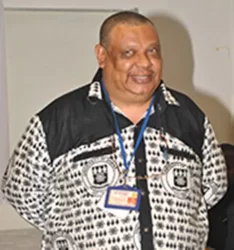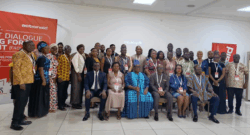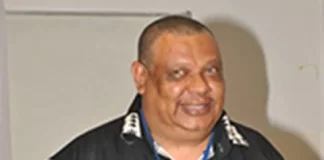Ghana is endowed with favourable agro-climatic and edaphic (soil) factors for optimal growth, development and yield of major tree crops. Thus, the Tree Crops Development Authority (TCDA) of Ghana aims to promote development of cashew, shea, mango, coconut, rubber and oil palm across four agro-ecological zones of the country. Thus, successful development of the tree crops agenda will supply raw materials to feed our agro-based industries, earn foreign exchange, employ the youth and contribute toward payment of tax to the economy.
The Trees Crops Development Act, 2019 (Act 1010) also provides a legal and organisational system for TCDA to promote research and development; boost activities of the value chains; enhance capacity building of actors; and foster licencing and regulation to reward actors, service providers and investors. It is opined that by 2028, after full operationalisation of the TCDA, we stand to earn an extra US$16billion annually to diversify the entire economy.
Tree Crops Development Agenda in the Tropical World
The tree crops development agenda has been promoted in many tropical countries and the top-ten producing countries are acknowledged. Ghanaians must be aware of our current position of tree crops development agenda relative to others. Ghana, ranks first in shea exports (130,000 MT), Burkina Faso (90,000 MT) and Mali (80,000 MT). Second, for cashew, India ranks first (750,000 MT), Cote d’Ivoire (680,000 MT), Vietnam (300,000 MT), Tanzania (240,000 MT), Philippines (200,000 MT), Nigeria (195,000 MT), Benin (165,000 MT), Guinea-Bissau (155,000 MT), Indonesia (150,000 MT), Brazil (110,000 MT) and Ghana (70,000 MT).
Third, for mango, India is first (16,196,000 MT), China (4,400,000 MT), Thailand (2,985,530 MT), Indonesia (2,376,339 MT), Mexico (1,760,588 MT), Pakistan (1,680,388 MT), Brazil (1,175,735 MT), Bangladesh (945,059 MT), Nigeria (860,000 MT), Egypt (786,528 MT) and Ghana (15,000 MT). Fourth, coconut, Indonesia ranks first (42.5 million MT), Malaysia (18.5 million MT), Thailand (2.8 million MT), Columbia (1.5 million MT), Nigeria (1.0 million MT), other countries (5.9 million MT) and Ghana (400,000 MT).
Fifth, oil palm originated from West Africa but ECOWAS is a net-importer of crude palm oil and crude palm kernel oil. For crude palm oil, Indonesia is first (44,500,000 MT), Malaysia (19,700,000 MT), Thailand (3,100,000 MT), Columbia (1,650,000 MT), Nigeria (1,280,000 MT), Guatemala (880,000 MT); Honduras (600,000 MT); Papua New Guinea (565,000 MT), Brazil (550,000 MT); Ecuador (545,000,000 MT); Cote d’Ivoire (515,000 MT); Cameroon (465,000 MT) and Ghana (365,000 MT).
It is opined that Malaysia learnt the agronomic practice of oil palm cultivation from Ghana in the early 1900s. Lastly, for rubber, Thailand is first (4,305,000 MT), Indonesia (3,088,000 MT), Malaysia (997,000 MT), India (891,000 MT), China (864,000 MT), Vietnam (790,000 MT), Philippines (548,000 MT), Cote d’Ivoire (411,000 MT), Guatemala (356,000 MT), Brazil (186,000 MT) and Ghana (21,440 MT) in 18th position. From the data available, Ghana is not among the top-ten producing countries for five of the tree crops.
The economic opportunity of tree crops is bright and anticipated to be better in the future. For instance, the global palm oil industry was valued at US$65.73billion in 2015 and is expected to grow at CAGR of 7% between 2016 and 2021 to reach US$92.84billion in 2021. Thus, this is an opportune time to reposition the six tree crops’ value chains, aimed to close the gap between Ghana and its rivals in order to benefit from foreign exchange earnings, employability, vertical linkages, etc. It is hoped that Ghanaians, as local investors, will also embrace repositioning the tree crops’ value chains as a way to galvanise the latent sub-sector.
Cameroon Development Cooperation
The Cameroon Development Corporation (CDC) is a success story to share with the investors. The CDC was formed in 1947 and its plantation covers 42,027 hectares comprising rubber (22,282 hectares), oil palm (15,240 hectares) and banana (4,525 hectares). It has a total of 22,036 workers of which 18,065 are hourly-rated, supervisory staff (635), management (289) and seasonal workers (3,047). The CDC exports semi-finished high-quality rubber, crude palm oil, palm kernel, crude palm kernel oil and top-grade edible banana to Germany and France.
Lessons learnt from the Tree Crops Development Agenda in other countries
The lessons learnt include:
- Ghana has 75.6% (102,816 km2) of an arable land area covering 136,000 km2 for the development of tree crop plantations across the country;
- Ghana is not among the top-ten producing countries for cashew, mango, coconut, oil palm, and rubber, hence the need to support the tree crops productivity catch-up intervention of the TCDA;
- The investment potential of tree crops value chains is so huge that the country stands to benefit enormously;
- The return on investment from tree crops value chains is high, contingent upon plantations of significant size and adoption of modern agronomic and agribusinesses practices;
- The 76-year CDC continues to expand its plantations to support the socio-economic and infrastructural development of rural communities via corporate social responsibility in the areas of education, health, potable water, etc.;
- To overcome constraints of the land tenure system, the National House of Chiefs, families and individuals who are custodians of the arable land are encouraged to partner with investors to participate in the tree crops development agenda to create wealth for their constituents. Typical examples noted are the Juaben Oil Mills, Juabeng-Ashanti, Bechem Oil Mills, Bechem, Ahafo Region, etc.;
- The investors include faith-based entities, individuals, companies (private and public), families, diaspora community, farmer-based associations, trade associations etc. which have the financial resources and expertise, who should partner with land owners to fully participate in the tree crops development agenda;
- The TCDA, as a matter of urgency, should have a series of community engagement and investment programmes to showcase the business opportunities (cost-effectiveness), guidelines, regulations & standards, technical assistance, financial support, business advisory services, horizontal & vertical linkages, partnership and tenancy agreements, outgrower schemes, plantation-outgrower scheme contract administration etc. to create stakeholders’ awareness, awake their interest, gain their desire – so that eventually they take concrete action to own tree crop plantations of significant size to earn reasonable financial returns over the next three or four decades;
- Also, the TCDA should deploy an integrated communication strategy via television advertisements, billboards in vantage areas, flyers, social media, radio/FM announcements, print or newspaper advertisements, celebrities and lobbyists throughout the media landscape in Ghana and abroad to enable stakeholders of the tree crops value chains to make informed decisions on partnership agreement, land acquisition, crop production, processing, trading and exporting in the four agro-ecological zones of the country;
- Investors in the tree crops sector must be made aware that other countries levied the commodities sold as a way to earn income to support financial sustainability of the tree crops development agenda. I made a similar remark on ‘lessons learnt from Malaysia in the oil palm industry in Ghana’ in the Chronicle Newspaper a couple of years ago;
- State institutions that are financially sound now should be encouraged to invest in the TCDA as equity partners and recoup their investment beyond the year 2030, so that we don’t collectively starve the new flagship intervention of financial resources to undermine its potential and credibility among stakeholders.
Notably, Ghana Cocoa Board, Ghana Oil Company Limited (GOIL), Ghana Gas Company Limited, Ghana National Petroleum Corporation (GNPC), Agricultural Development Bank, Ghana EXIM Bank Limited, Development Bank of Ghana, farmer-based and trade association, Pension and Insurance Companies, Metropolitan, Municipal, District Assemblies (MMDAs) etc. should be motivated to contribute equity and/or debt to ensure the TCDA is financially resourced and managed productively to achieve the ambitious annual revenue target of US$16billion by 2028;
- Lastly, we should not forget that as more tree crops are planted across the country we stand to increase the carbon sequestration capacity that, in turn, can mitigate the adverse effects of climate change and environmental degradation, and also enhance our resilient efforts to restore our degraded landscape.
Conclusion
The author thanks His Excellency the President of the Republic of Ghana, Honourable Minister of Food and Agriculture, board members and management team at the TCDA for the frantic efforts, expertise and organisational resources aimed to close the gap between Ghana and other tropical countries in respect of a tree crops development agenda. History will acknowledge their contributions toward this agenda after we have been successful in achieving the revenue target of US$16billion beyond 2028.
I implore land owners to partner with the investors so that a portion of the country’s 102,816 km2 of arable land area can be put under tree crop plantations aimed at creating sustainable wealth in our economy, as observed in Malaysia, India, Indonesia etc.
The author is the Director, Consultancy Directorate, MDPI, Accra. Tel: +233 (0) 244172411 and Email: [email protected].










